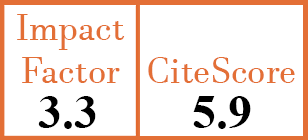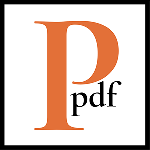Full Papers
A multicomponent physical activity home-based intervention for fibromyalgia patients: effects on clinical and skin biopsy features
E. Gentile1, S.G. Quitadamo2, L. Clemente3, V. Bonavolontà4, R. Lombardi5, G. Lauria6, G. Greco7, F. Fischetti8, M. De Tommaso9
- Neurophysiopathology Unit, Department of Translational Biomedicine and Neuroscience (DiBraiN), University of Bari Aldo Moro, Polyclinic General Hospital, Bari, Italy.
- Neurophysiopathology Unit, Department of Translational Biomedicine and Neuroscience (DiBraiN), University of Bari Aldo Moro, Polyclinic General Hospital, Bari, Italy.
- Neurophysiopathology Unit, Department of Translational Biomedicine and Neuroscience (DiBraiN), University of Bari Aldo Moro, Polyclinic General Hospital, Bari, Italy.
- Department of Biotechnological and Applied Clinical Sciences, University of L'Aquila, Italy.
- Neuroalgology Unit, Fondazione IRCCS Istituto Neurologico Carlo Besta, Milan, Italy.
- Neuroalgology Unit, Fondazione IRCCS Istituto Neurologico Carlo Besta, Milan, and Department of Medical Biotechnology and Translational Medicine, University of Milan, Italy.
- Department of Translational Biomedicine and Neuroscience (DiBraiN), University of Study of Bari Aldo Moro, Bari, Italy. gianpiero.greco@uniba.it
- Department of Translational Biomedicine and Neuroscience (DiBraiN), University of Study of Bari Aldo Moro, Bari, Italy.
- Neurophysiopathology Unit, Department of Translational Biomedicine and Neuroscience (DiBraiN), University of Bari Aldo Moro, Polyclinic General Hospital, Bari, Italy.
CER16930
2024 Vol.42, N°6
PI 1156, PF 1163
Full Papers
Free to view
(click on article PDF icon to read the article)
PMID: 38019150 [PubMed]
Received: 20/06/2023
Accepted : 11/09/2023
In Press: 27/11/2023
Published: 04/07/2024
Abstract
OBJECTIVES:
Adapted physical activity (APA) has been recommended for fibromyalgia (FM) treatment as an essential component of a biopsychosocial therapeutic approach for patients. Previous studies report that aerobic and resistance training are the most effective programs in improving the quality of life and psycho-physical well-being. Patients with FM are frequently affected by an impairment of small fibers innervation, which is evident in the proximal somatic districts. Therefore, this pilot randomised controlled not pharmacological trial aimed to investigate if a 12-week home-based multicomponent (aerobic and resistance training and mobility) physical activity (PA) intervention was effective in improving pain perception, FM-related disability, and IntraEpidermal Nerve Fibers Density (IENFD) in adult FM patients.
METHODS:
Thirty-four female subjects with a fibromyalgia diagnosis (51.5±11.88 years) were randomly assigned to an experimental group (n=17) that received a supervised home-based multicomponent PA intervention twice a week and a control group (n=17) that received a generic program of aerobic exercise. Skin biopsy was performed before the physical program and after 18 months with constant execution of the supervised PA intervention or generic aerobic exercise. Both groups assumed pharmacological treatment with duloxetine and/or pregabalin.
RESULTS:
We found that the group performing physical activity in a supervised and regular way showed a significant improvement in the Fibromyalgia-linked invalidity questionnaire (FIQ) as well as epidermal fibers density at proximal and distal sites.
CONCLUSIONS:
Physical activity could improve FM outcomes, with a possible beneficial impact on peripheral factors contributing to pain-related disability.


